
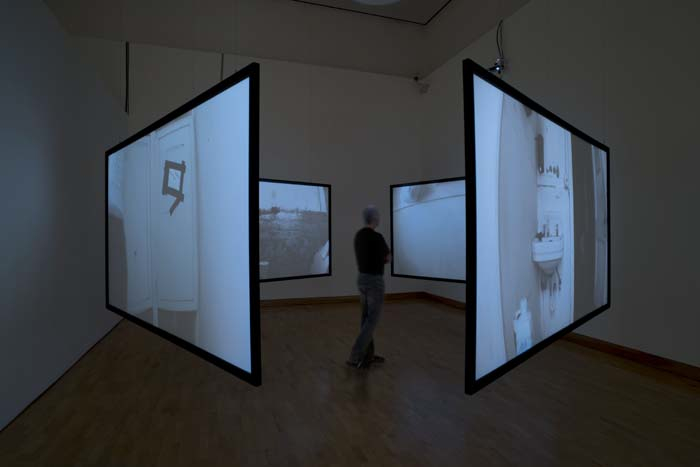
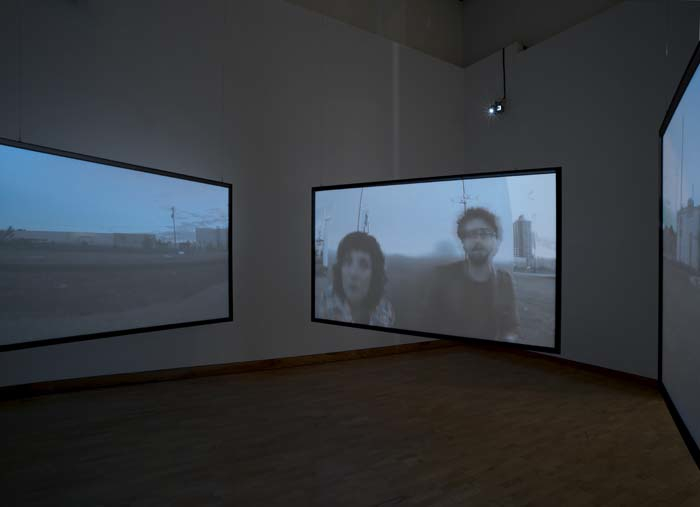
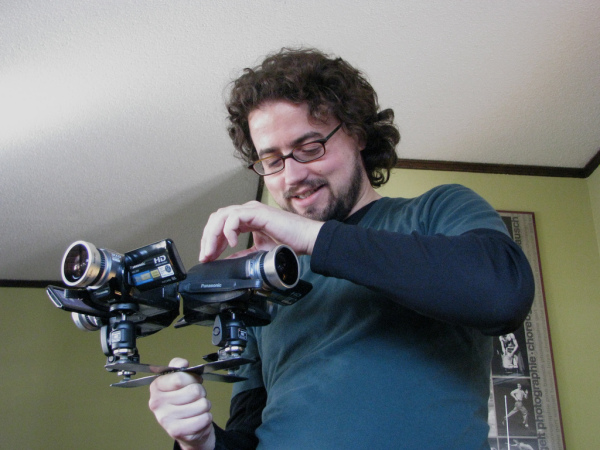
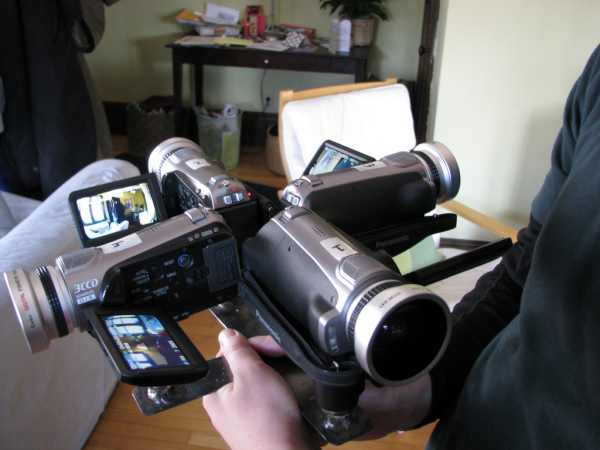
Kevin Obsatz, Gate to the Enclosure
“The author of the work is both safely hidden behind his/her framing choices, and in complete, unilateral control of the experience of the viewer”
The Gate to the Enclosure
Tired of the old descriptions of the world,
The latest freed man rose at six and sat
On the edge of his bed. He said,
“I suppose there is
A doctrine to this landscape. Yet, having just
Escaped from the truth, the morning is color and mist,
Which is enough: the moments rain and sea,
The moments sun (the strong man vaguely seen),
Overtaking the doctrine of this landscape. Of him
And of his works, I am sure.”-Wallace Stevens, “The Latest Freed Man,” (excerpt)
The Gate to the Enclosure is a 4-channel, 360 degree video installation.
My experience of traditional cinema, both in fictional narrative forms and in nonfiction documentary, can be conceptualized as a keyhole view; the perspective of the audience is carefully controlled, their gaze directed, their experience thoroughly mediated and moderated.
This leads to a “vignette” experience. In cinematic language, vignetting is a technique wherein part of the screen is darkened (usually around the edges, but other creative treatments of this technique have been experimented with over the years) to further focus the viewer’s attention on a specific detail – in classic filmmaking, this effect was often used to mimic the experience of looking through a keyhole.
Vignette is also a term used to describe a narrative style, usually presented as a series of brief scenes that, taken together, convey some kind of larger significance.”
The Gate to the Enclosure challenges the practice of restricting televisual communication to keyhole or vignette dynamics, in which the author of the work is both safely hidden behind his/her framing choices, and in complete, unilateral control of the experience of the viewer.
I built a four-camera video apparatus that captures a 360 degree field of vision, and I have been experimenting with it in various environments, both as a static observer and as a form which can be manipulated in three dimensional space, moved with a certain degree of smoothness thanks to its fairly wide and symmetrical design.
The dynamics of the relationship between cameraperson, apparatus and filmed subject are very different than those at play in the traditional act of filming with a single camera – the keyhole, as an operative metaphor, is exploded. There is no solid door to safely delineate what is outside and what is inside the field of view, and we find ourselves, observer and observed, subject and object, stuck on the same side of the lens, as part of the same landscape.”
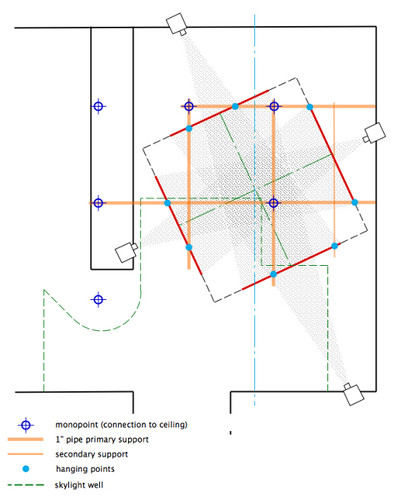
The Gate to the Enclosure will exist, in exhibition, as an arrangement of four projections on translucent screens eight feet wide, five-and-a-half feet tall, in a square configuration in a gallery at the Weisman Art Museum. The projected images will be visible from inside and outside the square; gaps of two and a half feet between the screens will allow passage through the center of the square, and around it on all sides.
Biography

Kevin Obsatz has been working with moving images since he first appropriated his family’s VHS camcorder at age 14. He graduated cum laude from the University of Southern California with training in classical Hollywood film production, but soon grew disenchanted with the industrial model of filmmaking, and left Los Angeles. His journey has led him through the realms of independent film, experimental film, documentary, web video art, collaborations with performing artists, and now, for the first time, a video installation piece and he’s thrilled by the idea of presenting video as a moving sculpture in three-dimensional space.
Obsatz uses the tools of cinema to explore the shape and scope of human interaction and interrelation how to we make meaning of our experiences, communicate emotion and share our stories with one another. He is fascinated and inspired by the dynamics of cinema as both a broadly populist and a deeply personal tool, which presents ever-evolving opportunities for creating connections that are both visceral and empathic, between individuals and groups in profoundly disparate contexts, across time and space. His work balances a desire to create beautiful imagery with a commitment to clarity, simplicity and transparency in communication, qualities encapsulated, for him, in the name “Video Haiku.” Rather than pursue a seamless and polished finished product that aspires to render its craftsmanship invisible, he prefers to leave fingerprints on his work, to incorporate into the finished product some traces of the process of creation.
Support
The Gate to the Enclosure is a commission of Northern Lights Art(ists) On the Verge program with the generous support of the Jerome Foundation and fiscal sponsorship of Forecast Public Art. The Minneapolis College of Art and Design supported the related symposium Experimenting With Art in Public Places. The Weisman Art Museum will exhibit the AOV commissions July 5 – August 23, 2009. Additional support for Northern Lights provided by the McKnight Foundation.